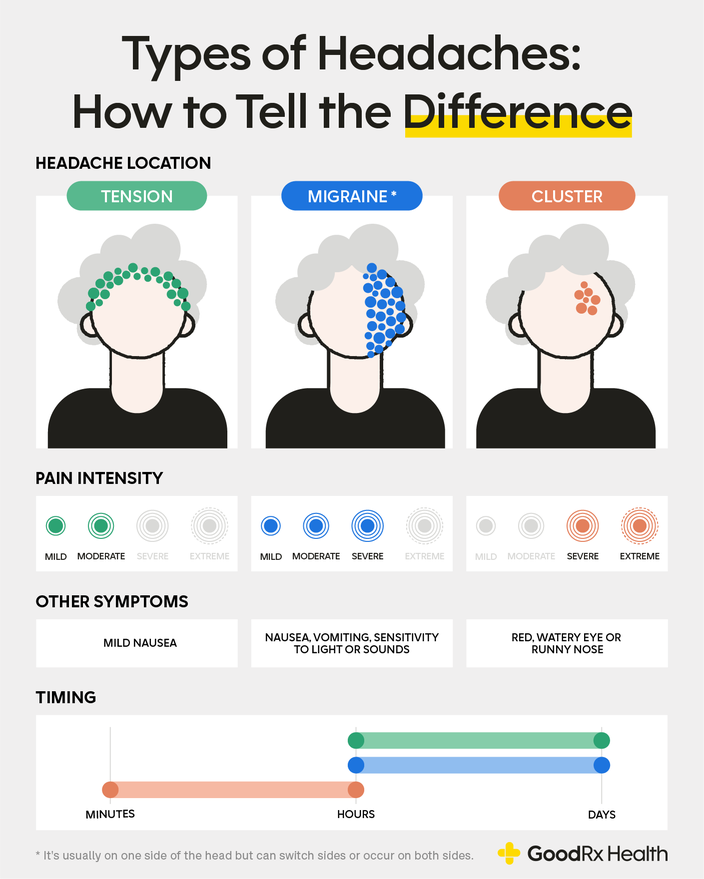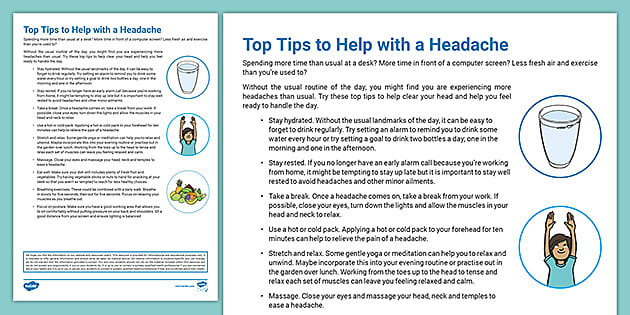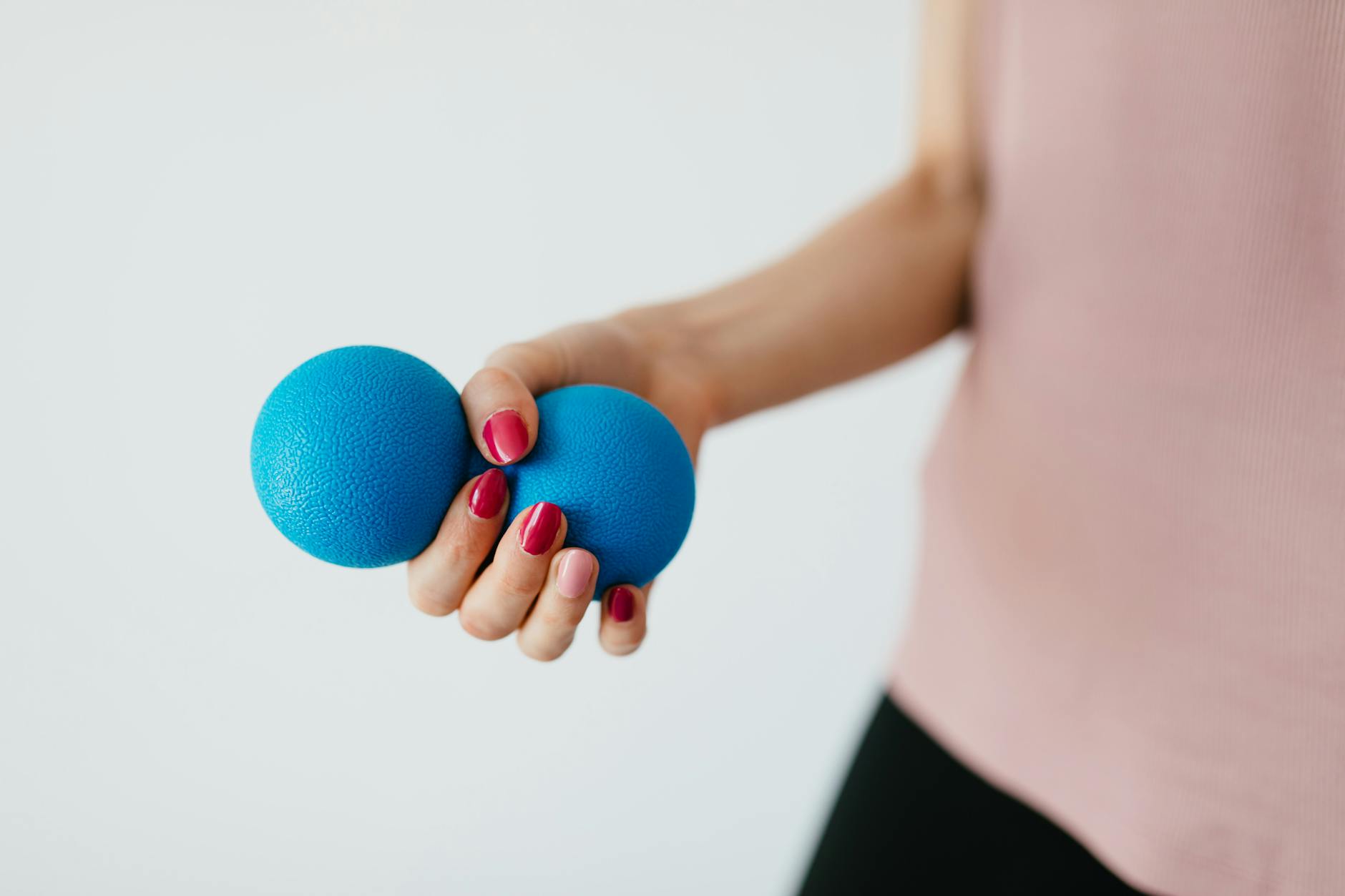Say goodbye to tension headaches with these simple and effective techniques that will have you feeling relief in no time!
Table of Contents
- Introduction: Understanding Tension Headaches
- Quick Tip: Cool Compress
- Quick Tip: Gentle Head Massage
- Quick Tip: Breathing Exercises
- Quick Tip: Getting Moving
- Quick Tip: Rest and Relax
- What to Avoid Doing
- When to Seek Help
- Practicing Regular Stress Management
- Summary: Beating Tension Headaches with Simple Steps
- FAQs About Tension Headaches
Introduction: Understanding Tension Headaches
Have you ever felt your head hurting after a long day at school or when things get a bit stressful? That might be a tension headache! Today, we’ll learn all about tension headaches and how stress can sometimes make our heads ache.
What Is a Tension Headache?
Imagine a tension headache as a squeezing feeling around your head, like a rubber band pulled too tight. It’s different from other headaches because it often happens when you’re feeling stressed or overwhelmed.
Why Do They Happen?
When we feel stressed or anxious, our muscles can tighten, even those in our head and neck. This tension can cause headaches to appear. So, it’s like our body’s way of saying, “Hey, I need a break!”
Quick Tip: Cool Compress
When you have a headache and need some relief, a cool compress can be your best friend. It’s a simple remedy that can help ease the pain and make you feel better. Let’s dive into how to use a cool compress effectively!
What to Use
All you need is something cool to place on your forehead or the back of your neck. You can use a wet cloth that has been chilled in the refrigerator or a cool pack that you keep in the freezer. These items can help reduce the pain and discomfort of a headache.
How to Do It Effectively
Find a quiet and comfortable spot to lie down. Place the cool compress on your forehead or the back of your neck, wherever you feel the most tension or pain. Leave it there for about 15-20 minutes. Close your eyes and relax while the coolness soothes your headache away. You can repeat this process as needed throughout the day for relief.
Quick Tip: Gentle Head Massage
Feeling a headache coming on? A gentle head massage might be just what you need to relax those tense muscles and ease the pain. But where should you focus on? Try softly pressing and rubbing the temples on the sides of your head or the base of your skull for a soothing effect. Be sure to keep it light and gentle, as too much pressure can make things worse.
By massaging these specific areas, you can alleviate some of the strain that contributes to tension headaches. It’s a simple and natural way to promote relaxation and relieve discomfort. So next time you feel a headache starting, give yourself a few minutes for a calming head massage.
Quick Tip: Breathing Exercises
When you’re feeling stressed or have a headache, one of the best things you can do is practice some simple breathing exercises. These exercises can help calm your mind and body, making you feel more relaxed and easing your tension headache.
Breath In, Breath Out
To do a breathing exercise, first find a quiet and comfortable place to sit or lie down. Close your eyes and take a deep breath in through your nose, feeling your belly rise. Then slowly exhale through your mouth, feeling your belly fall. Repeat this deep breathing for a few minutes, focusing on the sensation of your breath entering and leaving your body. You can do this exercise whenever you feel stressed or have a headache to help calm yourself down.
Quick Tip: Getting Moving
In addition to using cool compresses, gentle head massages, and breathing exercises to relieve tension headaches, another effective way is to get moving! Engaging in light physical activity can be a great way to relax your muscles and reduce headache pain.

Image courtesy of www.goodrx.com via Google Images
Fun Activities
Think about activities that you enjoy and that don’t require too much effort. Simple exercises like stretching or going for a leisurely walk can be helpful in easing the tension in your head and neck. Even just a little movement can make a big difference in how you feel!
Quick Tip: Rest and Relax
When you have a headache, sometimes the best thing you can do is take a break and just relax. Giving yourself some time to rest might be exactly what you need to feel better. Let’s talk about how to create a peaceful environment where you can unwind and let go of the tension.
Create a Restful Environment
First, find a quiet and cozy spot where you can lie down comfortably. Whether it’s your bed, a couch, or a favorite chair, make sure you can relax without any distractions around you. You might want to dim the lights to create a calm atmosphere.
| Technique | Description |
|---|---|
| 1. Deep Breathing | Breathe in slowly and deeply through your nose, hold for a few seconds, and then exhale through your mouth. Repeat several times to relax muscles and reduce tension. |
| 2. Neck and Shoulder Stretches | Gently stretch your neck by tilting your head to one side and holding for a few seconds. Repeat on the other side. Roll your shoulders backwards to release tension. |
| 3. Use a Warm Compress | Place a warm towel or heating pad on your forehead and neck to help relax muscles and ease tension headaches. |
| 4. Scalp Massage | Massage your scalp using gentle circular motions with your fingertips to relieve tension and promote relaxation. |
| 5. Drink Water | Dehydration can contribute to tension headaches, so drink plenty of water throughout the day to stay hydrated and reduce headache frequency. |
Next, grab a soft blanket or pillow to snuggle with. Being warm and cozy can help you relax even more. If you like, you can play some gentle music or sounds of nature to create a soothing backdrop for your rest time.
Close your eyes and take slow, deep breaths. Imagine yourself in a happy place, whether it’s a sunny beach or a peaceful garden. Let go of any worries or stress you may be feeling and focus on feeling calm and at ease.
Remember, it’s important to give yourself permission to take a break when you need it. Your body and mind will thank you for the rest, and you might find that your headache starts to fade away as you relax and unwind.
What to Avoid Doing
When you scrunch up your eyes and try to see something better, it can put a strain on your eyes. This straining can make your headaches worse, especially if you already have a tension headache. So, it’s important to try to relax your eyes and avoid squinting. If things look blurry or hard to see, it might be time for a break.

Image courtesy of www.twinkl.com.mt via Google Images
Skip the Sweets
As tempting as it may be to reach for that sugary treat, too much sugar can actually mess with your head. Eating lots of sugary snacks and drinks can sometimes trigger headaches or even make existing ones worse. It’s better to go for healthier snacks like fruits or nuts instead of candy and soda if you’re trying to avoid those pesky tension headaches.
When to Seek Help
If you’ve tried the quick tips for easing tension headaches but you still have a headache that won’t go away, it might be time to seek help from a doctor. While most tension headaches can be managed with simple remedies and relaxation techniques, there are situations where it’s important to talk to a healthcare professional.
Headache That Won’t Go Away
If you have a headache that persists for a long time, especially if it’s getting worse over several days or weeks, it’s essential to let an adult know. Sometimes, persistent headaches can be a sign of an underlying issue that requires medical attention. By talking to a doctor, you can get the proper guidance and treatment to address any potential concerns related to your headaches.
Practicing Regular Stress Management
In order to prevent tension headaches and improve overall well-being, it is important to practice regular stress management techniques. By incorporating simple habits into your daily routine, you can reduce the frequency of headaches and feel more relaxed.

Image courtesy of www.pinterest.com via Google Images
Daily Relaxation Time
One effective way to manage stress and prevent tension headaches is by setting aside daily relaxation time. This can involve engaging in activities that you enjoy and find calming, such as reading a book, listening to music, or practicing yoga. Taking time for yourself each day can help to lower stress levels and promote a sense of well-being.
Summary: Beating Tension Headaches with Simple Steps
When it comes to dealing with tension headaches, simple steps can make a big difference. By following the quick techniques outlined earlier, you can find relief from the pain and discomfort caused by these headaches.
Recap of the Tips:
First, using a cool compress can help ease the pain. Simply place a wet cloth or cool pack on your forehead or neck for quick relief.
Second, gentle head massages can relax your muscles and reduce headache pain. Pressing and rubbing the right spots on your head can make a world of difference.
Third, breathing exercises can calm your mind and body. Take deep, slow breaths to relax and ease the tension.
Fourth, getting moving with light physical activities like stretching or walking can also help in relieving tension headaches.
Lastly, remember to rest and relax. Creating a peaceful and comfortable environment can aid in headache relief.
By incorporating these simple techniques into your daily routine and practicing regular stress management, you can significantly reduce the frequency and intensity of tension headaches. Consistency is key, so make sure to make these tips a part of your daily habits for the best results.
FAQs About Tension Headaches
Can Kids Get Tension Headaches Too?
Yes, kids can get tension headaches just like adults. They may feel like a tight band squeezing around the head and cause discomfort.
Do Tension Headaches Hurt a Lot?
Tension headaches can be painful, but they are usually not as severe as migraines. The pain may feel like a dull ache and can last from a few hours to a few days.
How Often Can You Get a Tension Headache?
Some people may have tension headaches occasionally, while others may experience them more frequently. It varies from person to person and can be influenced by factors like stress and lifestyle habits.






